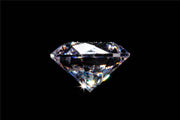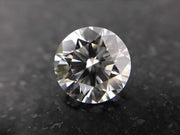Photo: Rich Dieckhoff
by Adele Peters - October 8, 2020
These diamonds are made of CO2 sucked from the air
Forget conflict-free: Your next diamond can be carbon-negative.
On the rooftop of a power-generating waste incineration plant near Zurich, Switzerland, a row of large machines pulls carbon dioxide from the atmosphere. Some of that CO2 then goes to a production facility in Chicago, where a startup called Aether is turning it into something new: the world’s first carbon-negative diamonds.
CEO Ryan Shearman started thinking about the concept while reading Drawdown, a book about the most effective solutions to climate change, and talking with Dan Wojno, who became his cofounder. Both had backgrounds in the jewelry industry. “We had a bit of an epiphany,” he says. “You’re carbon-based, I’m carbon-based, we live in a carbon-based world. Carbon in our atmosphere is really bad, but carbon itself inherently is not bad. And a diamond is just crystalline carbon.”
Traditional diamond mining is fraught with problems, from worker exploitation to deforestation and water pollution. While lab-grown diamonds are marketed as a more ethical alternative, they’re typically made from fossil fuels. But Shearman and Wojno realized that they could work with captured carbon instead. After Climeworks captures CO2, Aether purifies it into a form that can be used in a diamond reactor, where it can be turned into a diamond over the course or two or three weeks.
The startup is incorporating the diamonds into a new line of fine jewelry that it wants to appeal to consumers based on design, not solely the environmental message. “We want to make sure that this is something that you’d buy on its face, just because of the way it looks, because of the way it makes you feel,” Shearman says. “The environmental element to this is really kind of the icing on the cake. Because at the end of the day, most Americans—most people in general—don’t know their carbon footprint.” (The average carbon footprint in the U.S. is around 16 tons; a two-carat Aether diamond can offset roughly two and a half years’ worth of one American’s emissions.)
Over time, Shearman says, the diamond industry will have to move away from natural stones because the supply is dwindling. “The industry has already surpassed the peak diamond output,” he says. “So every year, from here on out, there will be fewer and fewer stones produced through traditional mining methods. By 2040, it’s anticipated that the global production capacity of mine diamonds will cut in half. So this is great for our market, because it forces the invisible hand. We have a declining supply of mined diamonds, but growing demand for diamonds in general. So you have to find a new source.”
For companies such as Climeworks that are pioneering new carbon-capture technology, diamonds also offer a financially attractive market. Direct air capture is still an expensive way to capture carbon, especially compared to something like planting trees. “If I can go and buy carbon offsets for anywhere from, say, $1 to $15 through regenerative farming or reforestation, that’s much more attractive than direct air capture, which is hundreds of dollars per tonne,” he says. “So without subsidies, direct air capture at its current stage and its current level of maturity is really kind of looking for these viable paths to market.”
Aether is beginning with limited production but says that the process can scale. The company will launch first with a waitlist and plans to begin to sell products in early 2021.




